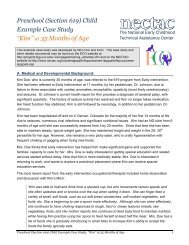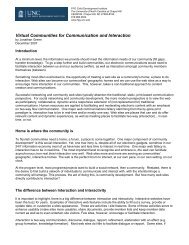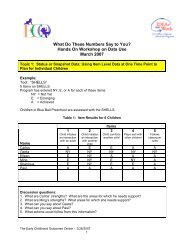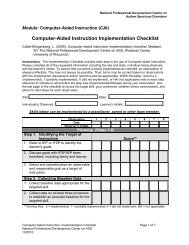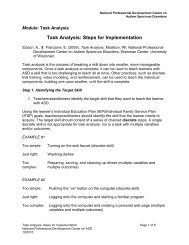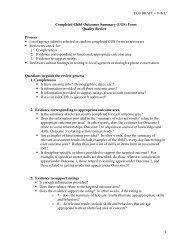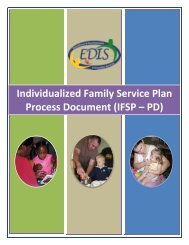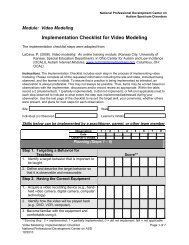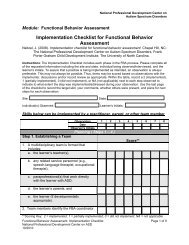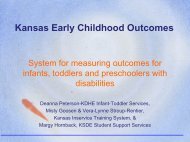Differential Reinforcement of Other Behaviors: Steps - National ...
Differential Reinforcement of Other Behaviors: Steps - National ...
Differential Reinforcement of Other Behaviors: Steps - National ...
You also want an ePaper? Increase the reach of your titles
YUMPU automatically turns print PDFs into web optimized ePapers that Google loves.
<strong>National</strong> Pr<strong>of</strong>essional Development Center onAutism Spectrum DisordersModule: <strong>Differential</strong> <strong>Reinforcement</strong> <strong>of</strong> <strong>Other</strong> <strong>Behaviors</strong>During the baseline phase, it is important to collect data for a long enough period <strong>of</strong> timeto see if there is some consistency in the behavior. Teachers/practitioners shoulddecide how long data will be collected (e.g., one week, two weeks), and what willhappen if there are not enough data to inform intervention (e.g., redesign the datacollection method, observe at a different time). Baseline data collection allowsteachers/practitioners to assess the impact <strong>of</strong> the intervention on the interferingbehavior over time. Typically the behavior should be observed for three or more days indifferent settings (e.g., science class, music).3. Teachers/practitioners decide who will collect the initial data.For example, it might be easiest for a parapr<strong>of</strong>essional to collect data across the day.The team also may decide that it would be easier to have an objective observer collectdata rather than the classroom teacher who is in the middle <strong>of</strong> a lesson.Step 4. Selecting a <strong>Differential</strong> <strong>Reinforcement</strong> ProcedureThere are many types <strong>of</strong> differential reinforcement procedures included in thedesignation <strong>of</strong> DR. They include:differential reinforcement <strong>of</strong> other behaviors (DRO; e.g., reinforcing singing toreplace screaming);differential reinforcement <strong>of</strong> alternative behaviors (DRA; e.g., reinforcingshaking hands to replace slapping);differential reinforcement <strong>of</strong> incompatible behaviors (DRI; e.g., reinforcingappropriate language to replace swearing); anddifferential reinforcement <strong>of</strong> low rates <strong>of</strong> behavior (DRL; e.g., reinforcinghand raising which rarely happens).1. When deciding which procedure to use, teachers/practitioners:a. identify functionally similar behaviors (behaviors that serve the samefunctions--such as saying, “Help please” instead <strong>of</strong> grunting) that learnersalready have in their repertoire;b. determine the type and amount <strong>of</strong> functional skills (skills the learner currentlyhas that are functional alternatives to the interfering behavior—e.g., he cantap teacher on the arm to secure her attention instead <strong>of</strong> screaming);c. determine how frequently these desired behaviors occur;<strong>Differential</strong> <strong>Reinforcement</strong> <strong>of</strong> <strong>Other</strong> <strong>Behaviors</strong>: <strong>Steps</strong> for Implementation Page 4 <strong>of</strong> 10<strong>National</strong> Pr<strong>of</strong>essional Development Center on ASD10/2010



